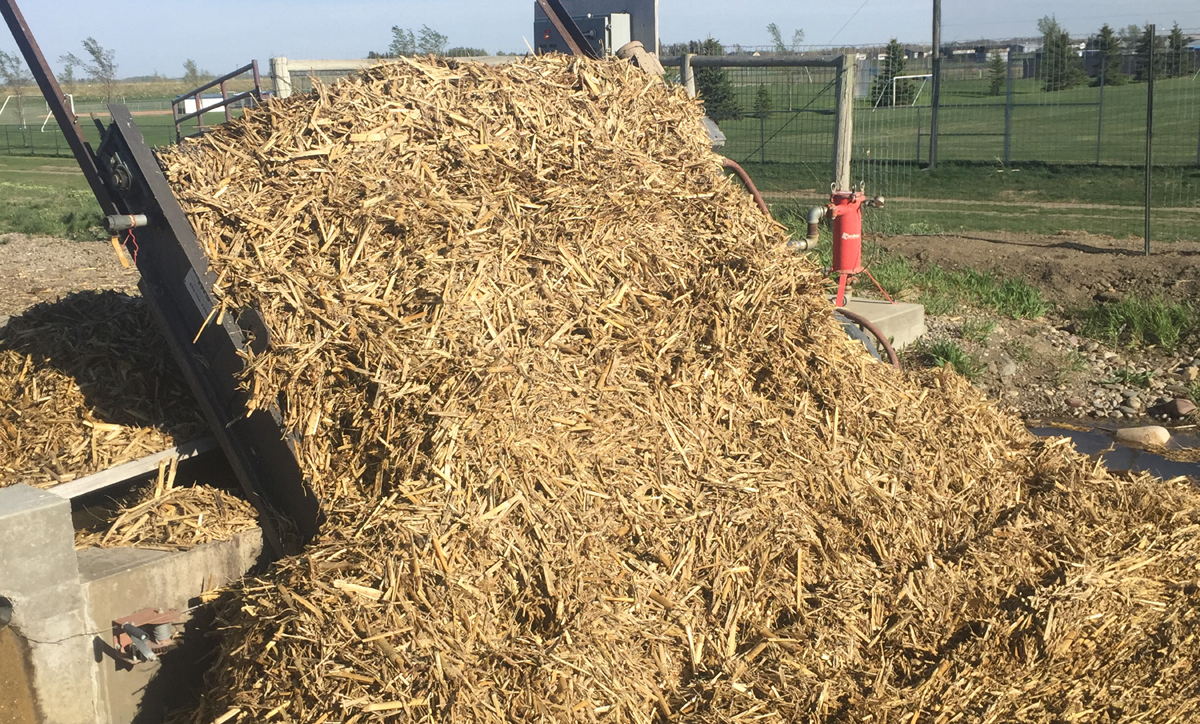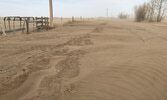Getting along with neighbours is important no matter where one lives. When you live in a rural, agricultural area where the land is both home and livelihood, good neighbour relations can be extra critical. Unfortunately, wind-blown soil erosion can come between the best of neighbours.
Jane Smith came home from a trip to the city this spring to find soil blown onto her lawn. Not a small amount of soil.
"You know how snow blows into drifts. That's what happened on my lawn, except that it was dirt. I just sat in my car and stared at it. I didn't even want to get out of my car because then I'd have to figure out how to deal with it."
Smith lives near Lethbridge, Alberta, across the road from agricultural fields. She's supportive of agriculture ≥ her parents were farmers, and many friends are too. In fact, the primary reason she asked us not to use her real name in this article is that she doesn't want her neighbour, whose soil blew onto her lawn, to be identified and vilified. Though she admits that the blow-dirt was more than a frustration - cleaning up ended up costing her significant time and money ≥ she says she believes the cause was Mother Nature rather than her neighbour's management error.
Not everyone, upon finding unexpected blow-dirt suffocating their lawn, crushing their newly planted flower beds, filling their window-wells or blackening their doorsteps, would be as charitable as Smith. In some years, regional districts around southern Alberta receive multiple calls from unhappy recipients of blown soil.
Neighbours get more than dirt

Blow-dirt can also be detrimental to farm fields downwind. Anyone who has found themselves in or next to a field that starts to blow knows that wind filled with particles of sand, clay and organic material is highly abrasive. When a field starts to blow, the abrasive action can decimate a seedling crop next door, and/or can scrape up the surface of a neighbouring field and start it blowing too.
Two years ago, Farming Smarter's general manager, Ken Coles, received blow-dirt from a neighbour next door. So much soil blew that it filled an entire 12' deep, 12' wide drainage ditch between the properties, then proceeded to lay six to 12 inches of accumulated soil through the first 300 feet of Coles' seed alfalfa field. His sub-surface drip irrigation, installed under 12 inches of soil, was essentially useless where the blow-dirt doubled the topsoil depth. The blown soil also carried in weeds and disease, including Group One resistant wild oats.
"I'm definitely not happy with what happened. It's been a major economic impact for me," says Coles. Though additional topsoil sounds like a benefit, he says exactly the opposite is true.
"It's not the same as getting nice topsoil. It's like getting dead soil. The texture is gone, which almost kills the soil. Nothing wants to grow."
At a municipal or regional district level, the costs of blow-dirt can be significant.
So far in 2021, the County of Newell, for example, spent nearly $250,000 on its soil conservation program, specifically on contractor fees, labor, trucking, staff time, and gravel to resurface silt-covered roads.
"This spring, Mother Nature gave us a whopping spring, so [the County] did bear the majority of the costs of clean-up," says Todd Green, director of agricultural services with the County.
That said, he points out that costs aren't always so high: the County spent just $908 on soil conservation programming last year, and $0 in both 2018 and 2019.
To better meet taxpayers' needs into the future, the County is currently creating a soil conservation policy, and updating the Unauthorized Use of Property bylaw regarding who must pay for clean-up.
"We've talked to many producers who have had [blow events] happen and they all know we can't sustain the practice of paying for the clean-up. It's not sustainable long-term for ratepayers who don't have soil erosion issues to pay for those who do," says Green.
As a farmer himself, Coles knows that blowing soil is not always a management error: last fall and winter's extreme winds blew even well-managed fields. Still, he says today's farmers may need to adjust their farming with an eye to better mitigating wind erosion.
"The weather has been rough lately. The wind we've had recently exceeds what's normal. I'm hearing soil is even blowing in standing stubble, which didn't happen before," says Coles. "If that continues to be the trend, it is up to all of us as farmers to change our management practices to adapt. Managing wind erosion is good for neighbour relations, but it's good for the individual farmer too."
This is the 4th article in a series of 5 on soil blow
article 1 Yes, Blowing Soil Breaks a Law
article 2 Economics of Agricultural Blow-Dirt
article 3 Dollars Blowing in the Wind
article 5 Tillage is problematic on The Prairies

